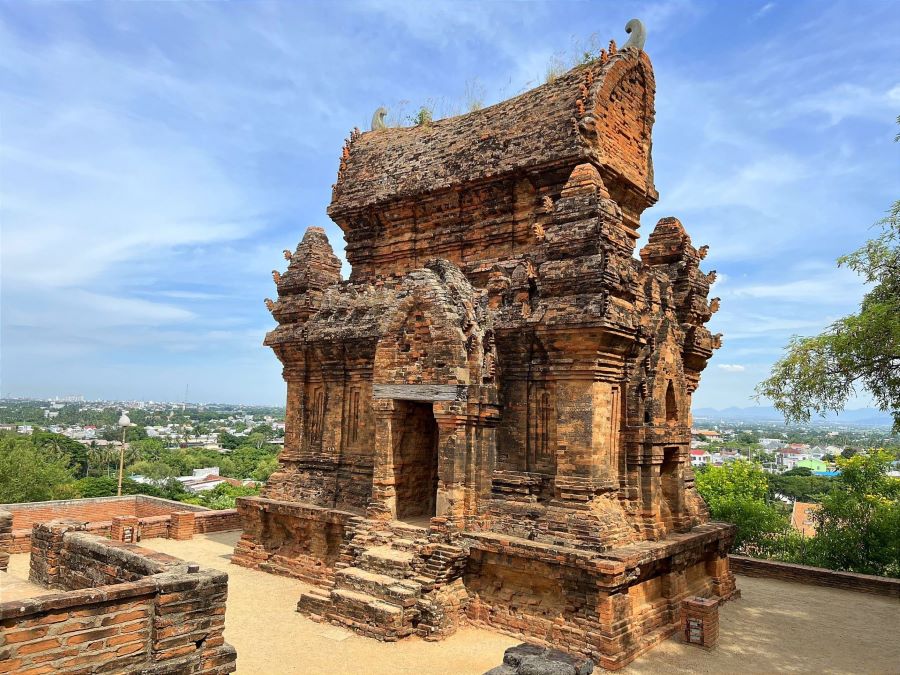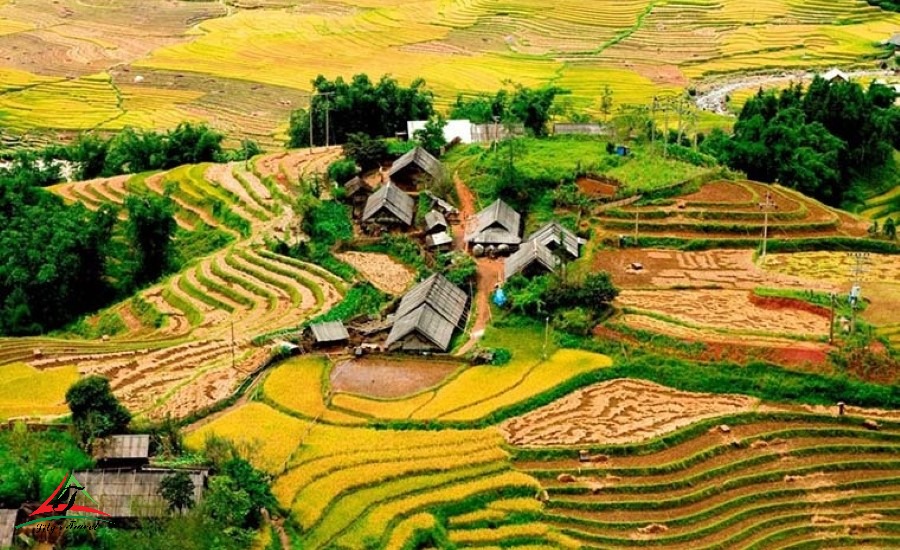5 Interesting Festivals in Vietnam Central Highlands (Tay Nguyen)
Tay Nguyen is a mysterious land where every breathtaking waterfall or enchanting jungle is associated with many legends. There is no place in Vietnam which has numerous ceremonies like the Central Highlands. Because of the locals’ belief in animism, anything related to production and human life must be asked for permission from Yang (the God). When one thing takes place successfully, people have to repay Yang. If you violate local customs, Yang will punish you. That’s the reason why there are many cultural rituals, ceremonies and festivals held yearly in Central Highlands region. These 5 interesting festivals in Vietnam Central Highlands will be unforgettable parts of your trip to Central Vietnam.
Read more:
- Best Vietnam Festivals and Holidays
- 10 Interesting Vietnamese Spring Festivals
- Lunar New Year and traditional activities during Tet holiday
1. Elephant Racing Festival
- Time: The third lunar month of every two years (in even years)
- Date: Feb 3rd, 2020
- Location: Don Village, Buon Don District, Dak Lak Province
- Purpose: Reflection of martial spirit and elephant taming skills of ethnic groups in Central Highlands.
- Participators: M’nong ethnic minority
Elephant Racing Festival and Spring in Don Village
Don Village is located on the highland of Dak Lak Province, in Krong Na Commune, Buon Don District, 400 kilometers from the north of Buon Ma Thuot. Elephant Racing Festival is most famous among festivals in Vietnam Central Highlands, the festival takes place here during springtime, normally in the third lunar month. Spring is also the time for other festivals in Central Highlands such as New Rice Ceremony, which represents the wish of local people for bumper crops.

- Elephant Racing Festival
Elephant Racing is one of the biggest events in the Central Highlands and is the signature of M’nong people, who are famous for their bravery in elephant taming. Elephants from several villages will gather at Don Village. The racetrack is around 1 to 2 kilometers long and broad enough for 10 elephants to run. In preparation for the race, the elephants are fed with corns, sugar canes, sweet potatoes, papayas, and bananas. Also, the elephants are free from hard works so that they can maintain their strength.

- Vibrant atmosphere at Elephant Racing festival
Steps and Rules of the Elephant Competition
The competition is guided by the sound of tu va (a musical instrument made from animal horns). The elephant riders take their elephants to the racetrack and stand in a row at the starting point. The elephants greet spectators by slowly kneeling and nodding their heads. After the signal of tu va, the race starts along with the echoing sounds of drums, trumpets and gongs performed by festival-goers. The winning elephant receives a laurel wreath and an award of bananas and sugar canes from spectators.

- Elephants swimming across Serepok River

- Elephants playing football
When finishing the race, the elephants can participate in other exciting games such as swimming across Serepok River, playing football, tug-of-war, and throwing balls. After the festive day, villagers will gather to drink traditional wine and dancing in the lively atmosphere of gongs.
2. Gong Cultural Festival
- Time: Held alternately annually (non-periodical holding)
- Location: Take place alternately in five provinces: Dak Lak, Dak Nong, Gia Lai, Lam Dong, Kon Tum
- Purpose: Promote the space of gong culture and restore some traditional rituals
- Participators: All ethnic minorities in Central Highlands region
Gong Cultural Festival is held alternately in five provinces that possess the space of gong culture. The purpose of Gong Cultural Festival is promoting the space of gong culture, which was recognized as a Masterpiece of the Intangible Heritage of Humanity by UNESCO in 2005. In this festival, artists from various ethnic minorities will gather and perform gong. Discovering the space of culture is an interesting activity which is included in our Central Vietnam Mountainous Landscape Discovery tour.

- Gong Cultural Festival
From the locals’ perspective, gong is a musical instrument with sacred power. Gong is associated with many local cultural events and acts as a mean to communicate with deities and the God. Gong also contains various developmental stages of music, from simple to complex. In Central Highlands, people perform Gong in an orchestra. Depending on each ethnicity, a gong orchestra can contain 3, 5, 6 primary sounds or even 12 sounds.

- Women dancing at Gong Cultural Festival
At Gong Cultural Festival, some traditional rituals are restored so that the community can understand and help in protecting Central Highlands’ cultural heritage. This event is also an opportunity to introduce travelers about the achievements in economy, culture and tourism of this region.
Read more: Gong Cultural Festival in Tay Nguyen (Central Highlands)
3. New Rice Eating Ceremony (Le an com moi)
- Time: After harvesting time, at the end of the lunar year
- Location: Dak Lak and Dak Nong
- Purpose: Enjoy the fruits of hard work and express thanks to the Rice God
- Participators: E De ethnic minority
The Preparation
There is no better chance to understand local culture than taking part in their activities which are included in our family tours to Vietnam. Like the Lunar New Year of Kinh minority, New Rice Eating Ceremony is one of fascinating festivals in Vietnam Central Highlands to enjoy. New Rice Eating Ceremony, or Hma Ngat in ethnic language, is held after harvesting time. The ceremony does not take place simultaneously, but in a sequential order: house after house, village after village.

- Types of Food for New Rice Eating Ceremony
To prepare for the festival, the males take charge of killing pigs, chickens and preparing wine while females take care of cooking and cleaning their houses. Everyone wear their most beautiful costumes at the event. If the house-owner is a family chief, his relatives have to contribute offerings.

- New Rice Eating Ceremony
The Beginning
When people hand the gongs up and put the offerings at house-front, the ceremony begins. The shaman, dressed in a special costume, put a bowl of alcohol and mix it with pig’s blood. The eldest woman of the family has the honor to drink that special bowl. After that, the shaman sprays wine at the kitchen, stairs, rice storage, and the family’s set of gongs in order to wish for fortune and health next year.

- E De people at New Rice Eating Ceremony
After the eldest woman, the relatives and villagers start to drink. The locals enjoy the foods and listen to an orchestra playing gongs. Later at night, an old man with everyone’s respect will tell Khan (Ede minority’s legends). Both the narrator and listeners get deeply absorbed in heroic legends about Dam San, Dam Di and the victories of the minority.
4. Tomb Abolition Ceremony
- Time: Pre-spring period
- Location: All villages in Central Highlands
- Purpose: Liberate the living from all ties with the dead
- Participators: Gia Lai and Ba Na ethnic minorities

- Tomb Abolition Ceremony
Tomb Abolition Ceremony or Tomb Abandonment Ceremony (Lễ Bỏ mả in Vietnamese or Go Thi festival in local language) is a complex ceremony and one of festivals in Vietnam Central Highlands. It takes place for 3 to 6 consecutive days. Gia Lai and Ba Na people, as well as some other ethnic groups in the Central Highlands, believe that the soul of the deceased person still lives. After a while it will come back, maybe it will enter the bodies of small children. From that perspective, ethnic people hold Tomb Abolition Ceremony, which is the last farewell of the living before seeing off the dead to the other world.

- Prepare offerings to say farewell to the dead at Tomb Abolition Festival
How Does Tomb Abolition Ceremony Take Place?
- The first day has another name as ‘the hoeing day’ (anar choh cham) when people clean old tomb houses and inform the soul of the dead that they will start Tomb Abolition Ceremony.
- The second day is ‘the tomb house building day’ (anar pom boxat). People start building a new tomb house on that day.

- Prepare can wine for the festival
- The third day is the ‘mot boxat day’, people bring the foods and alcohol to say farewell to the dead. People provide the dead with food and other necessities, and both cry and laugh to make the soul happy and less inclined to come home and disturb the living relatives.
- In the fourth day, buffalos and oxen are killed to make foods. The ceremony on the fourth day is basically similar to the third day, but the content of the offering is different. When families of the dead execute all rituals, other people perform gongs and dance outside the tomb house.
- Tomb Abolition Ceremony finishes on the fifth day. Families of the dead prepare foods and alcohols for their relatives, organize a ceremony to show their gratitude to the God and clean their houses. Only after the ceremony is the soul of the deceased completely separated from all ties to life and the living are free from all contact with the deceased.
5. New Rice Ceremony (Le mung lua moi)
- Time: When the crop ends, normally starts from the 10th day of the tenth lunar month
- Location: All villages in Central Highlands
- Purpose: Show gratitude to the God and pray for good crops next year
- Participators: Gia Rai, Ba Na, and Xo Dang ethnic minorities
After the Crops
The time when villagers finish their crops is coincident with the New Year ceremony. This is also villagers’ free time after a crop and the time for the soil to ‘rest’ in their tradition. New Rice Ceremony is the unique culture of this region with the wish to bring a prosperous life to the community. This festival is one of important festivals in Vietnam Central Highlands and under organization regardless of a crop is good or bad. If it is a good crop, the village elders will express gratitude to the God. If not, they will pray for an abundant harvest next year.

- New Rice Ceremony
In preparation for the festival, one week prior to the event, the village elders gather everyone in Communal House to inform the time and assign tasks for each family. Normally, the females do the cooking, preparing the rice, picking up vegetables, and cleaning up the houses while the males are responsible for cutting firewood, hunting, and other house repairing duty.

- The village elder prays for a good crop next year
Food and Tradition in the Festival
After harvesting, the females cook a large pot of sweet-smelling rice. Main dishes for New Rice Ceremony contain animal meat, river fishes, pork, a pig’s head, bamboo-tube rice, and traditional alcohols. When the worship ceremony takes part, the village elders report this year’s crop (whether it is good or not), pray for timely rain, favorable weather, and wish that next year’ crops will not be destroyed by pests nor wild beast. The offerings cooked by females (chicken, pork, rice, etc.) are ritually dedicated to the God.
When the ceremony ends, people gather to enjoy the foods, drink and dance. The purpose of Gong is to welcome the next crop. It is also an opportunity for ethnic boys and girls to talk to each other and make friends.
Start planning your tailor-made Vietnam tour by contacting one of our specialists…





















